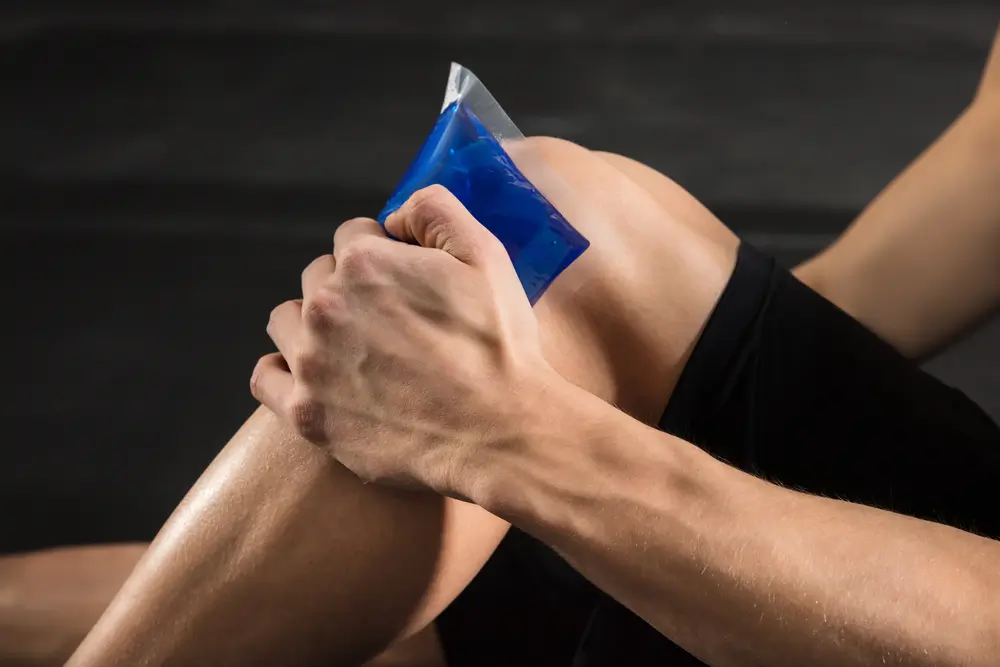Chronic Exertional Compartment Syndrome (CECS):
- In CECS, the Tibialis Anterior muscle (the muscle on the front of the shin) becomes swollen, causing increased pressure within the capsule of the muscle.
- This can result in shin pain and may interfere with the nerve and/or blood supply to the area.
- It’s thought CECS may account for around 50% of lower leg pain brought on by exercise or running. It’s equally common in men and women and tends to start in the early 20s.
- People who have Diabetes are at a slightly higher risk.
- In CECS, pain and soreness may start during exercise, in the muscular area on the shin. This pain tends to arise after a specific amount of exercise each time, and settles with rest.
- Over time, the shin pain may start up after shorter and shorter periods of activity, and the recovery time may also get longer.
- Less commonly, pins and needles, numbness or weakness may occur if there’s nerve compression.
- If CECS is suspected, a specialist opinion should be considered (i.e. an orthopaedic surgeon), as it can be serious and sometimes requires surgical intervention.
Tibial Stress Fractures:
- Tibial Stress Fractures can happen in runners, and particularly in people who have increased their exercise dramatically over a short period of time.
- Stress fractures are caused by the muscles and tendons repeatedly pulling on the tibia bone.
- Symptoms include tenderness and pain in a specific point on the shin.
- The diagnosis is confirmed by performing an X-ray and sometimes other tests.
- If an X-ray is normal but the pain continues or worsens, a second X-ray may be advised a few weeks later, as sometimes a stress fracture does not show up initially.
- Other tests such as MRI scans may be needed, if the diagnosis is uncertain.
- Specialist advice and management is usually recommended.
- Treatment involves rest, reduced weight-bearing, and then a gradual return to activity, under the guidance of a physiotherapist/specialist.
Shin Splints
- Shin Splints is also known as Medial Tibial Stress Syndrome or MTSS
- Shin splints usually affects both legs, resulting in pain anywhere along the shin from the knee to the ankle.
- It may be caused by over-vigorous training.
- It is essentially a stress reaction, with inflammation occurring where the muscles and tendons pull on the bone.
- The shin pain tends to be triggered as soon as exercise begins, and it may feel sore to press along the front of the shinbone.
- Chronic shin splints is more common in women, people who are overweight or whose feet “over-pronate”- i.e. due to flat feet/collapsed arches.
- It’s important not to “run through the pain” if you have shin splints.
- Treatment usually involves rest, ice-packs and anti-inflammatories.
- A good physiotherapy program may help with recovery.
- If there are foot problems, a podiatrist opinion may be very useful, with attention to proper footwear and arch support if needed
If you have concerns about shin pain or lower leg pain, you should speak to your GP or physiotherapist.
Further Patient Resources:
Chronic Exertional Compartment Syndrome mayoclinic.org
Shin Splints healthdirect.gov.au
Article Resources:
Brewer RB, Gregory A. (2012) Chronic Lower Leg Pain in Athletes

Getting a Mental Health Care Plan in Australia: Your Guide
Getting a Mental Health Care Plan in Australia: Your Guide Mental health matters—and if you’re feeling overwhelmed, anxious, or down, a mental health care plan can help. But what is it, and how do [...]
UTI Symptoms and Treatment: What You Need to Know
UTI Symptoms and Treatment: What You Need to Know Urinary Tract Infections (UTIs) are common, uncomfortable, and often disruptive. But what exactly are the signs to watch for, and how can you get relief [...]
Free Mental Health Care Plan Online | Bulk-Billed by Qoctor
Free Mental Health Care Plan Online | Bulk-Billed by Qoctor Discover how to get a free, bulk-billed Mental Health Care Plan (MHCP) in Australia through Qoctor's telehealth service. Accessing [...]





